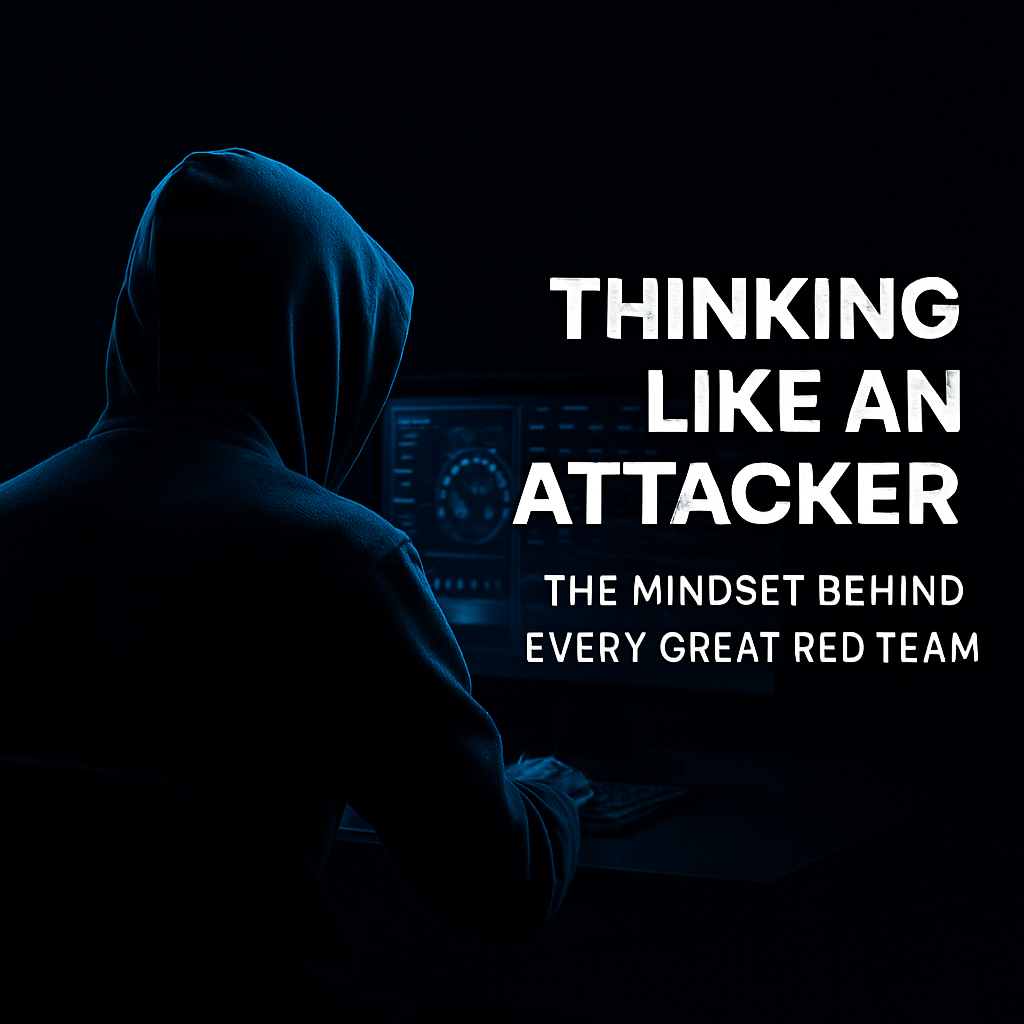If you've ever wondered what really separates an average penetration tester from a great red teamer, it's not just tools or techniques it’s mindset.
Red teaming is less about code execution and more about strategic thinking, adaptability, and the ability to read between the lines of a network. To be successful, you have to think like an attacker not just act like one.
This post breaks down the core mindset shifts that define elite red team operators in today’s digital landscape.
What Makes Red Teaming Different?
Unlike traditional penetration testing, red teaming focuses on real-world attack simulation. It's a full-scope operation with unpredictable entry points, creative lateral movement, and goals that mimic actual adversaries. But the most powerful asset in any red team operation isn’t a script it's the mindset behind the keyboard.
1. Curiosity Is Your Most Valuable Skill
At the heart of red teaming is deep curiosity. The best operators constantly question their environment.
They don’t just accept configurations at face value. They ask:
- Why is this service exposed?
- What’s hiding behind this permission?
- Who assumed this setup was secure?
Every unusual port, forgotten host, or inconsistent DNS record is an opportunity. Curiosity leads to recon, and recon opens doors.
2. Exploit Trust, Not Just Systems
Real attackers don’t always look for zero-days they look for misplaced trust. And red teamers do the same.
If a system trusts a user, or a domain trusts a remote connection, that’s the real vulnerability. If a user trusts an email, a document, or a pop-up you’ve already got access.
Understanding and exploiting trust relationships is one of the most advanced red team skills you can develop.
3. Predictability Is a Dead Giveaway
Red teamers thrive on unpredictability. If your attacks are linear or too obvious, defenders will catch you early.
Instead, smart operators shift schedules, mimic normal user behavior, and use outdated systems as pivot points. They launch attacks when no one’s watching and move laterally in unexpected ways.
Unpredictable movements equal survival and success.
4. Know Defensive Tools to Beat Them
One of the biggest mindset shifts? Learn the blue team’s playbook.
- Know what the SIEM is logging
- Understand how the EDR interprets behavior
- Anticipate where detection rules are weak
Once you know what defenders expect, you can navigate around it quietly and effectively.
5. Debrief Like a Professional
After every operation, conduct a self-assessment. What worked? What didn’t? Where did you waste time? What breadcrumbs did you leave?
The best red teamers evolve by analyzing their failures more than their wins.
These post-engagement reflections are what take your skills from good to lethal.
Conclusion: Red Teaming Starts With Mindset
Mastering red teaming is about more than just exploiting systems it's about learning how to think like a threat actor.
When you stop relying on tools and start asking better questions, when you stop rushing and start observing, that’s when your game levels up.
Here at Nest Cipher, we’ll keep diving into the deeper layers from mindset to method, from philosophy to payload.
Stay tuned. You’re just getting started.
# ✅ Want more? Subscribe for weekly red team insights and hands-on lab guides.
